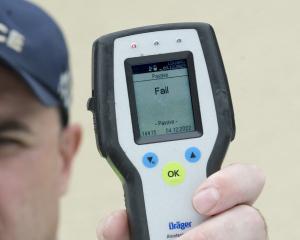Councillors ruled out the option to sell carrot cutters, mixers, bait feeders and the building they are stored in during its first implementation committee meeting yesterday.
The decision followed much discussion about the council’s fresh and improved approach to its biosecurity activities, which raised concerns from some councillors.
A report from staff asked councillors to decide whether they wanted to sell the rabbit-control assets, keep and maintain them, or keep and lease them.
Nine councillors voted to rule out selling and requested further information from staff on the other two options.
Crs Marian Hobbs and Kevin Malcolm voted against ruling out selling. Cr Michael Laws was absent.
But most of the meeting was spent discussing the new approach to biodiversity activities, involving better community engagement, facilitating rabbit control in peri-urban areas and recruiting three additional fixed-term positions within its biosecurity team.
Despite the plan being a step in the right direction, it was not enough, Cr Gary Kelliher said after the meeting.
While he could support the "light and optimistic" direction for now, the council would need to become more heavily involved in pest management.
"Facilitation is not going to be enough," he said.
He believed the council needed to carry out pest-control work, particularly in peri-urban areas, in order to achieve long-term results.
"The longer we avoid that, the worse the problem gets."
As for the three new staff members, that would assist with the facilitation, but not beyond that, he said.
"My concern is that ... you might be dealing with 50 properties or more and it is going to take a lot of co-ordination to talk to all of those properties, tell them what is happening, what their responsibilities are."
Ahead of the long-term plan, Cr Kelliher hoped to see community consultation on whether the council should take on pest control.
"This pest has not gone away for well over a century now ... we need a much more longtime solution than what we are looking at."
Crs Kate Wilson, Hilary Calvert and Gretchen Robertson agreed that more monitoring was needed in rabbit-prone areas.
It was an important first step in order to communicate the issue to communities and be transparent.
"People won’t act unless they can see that," Cr Robertson said.
Biosecurity and rural liaison manager Andrea Howard said monitoring was just one mechanism and visiting and inspecting properties would also be carried out.
Responding to claims that the council’s new approach was still too "light", chief executive Sarah Gardner said it could not achieve what was being asked with only one staff member currently dedicated to rabbit control.
"We are willing and ready to do more, but we need support to be able to do the work."
But the steps in the right direction did not go unnoticed.
Cr Andrew Noone said the council had been "missing in action" in the rabbit-control space for a decade, but the new pest management plan was a positive step.
"There will be deficiencies but this is a positive step ... we have done a lot of talking and it is time to walk the talk."
Cr Michael Deaker called it a "hell of a good paper".
"I cannot remember, in my time on this council, an optimistic paper on rabbits.
"This is an optimistic paper."
Comments
The biosecurity team must be understaffed, but not as bad as the team who are running the buses! My partner e-mailed the council with a simple biosecurity query about a pest plant nearly 2 weeks ago but they have sent 2 e-mails back apologising for the delay because they are busy with Bee Line bus inquiries!!!












